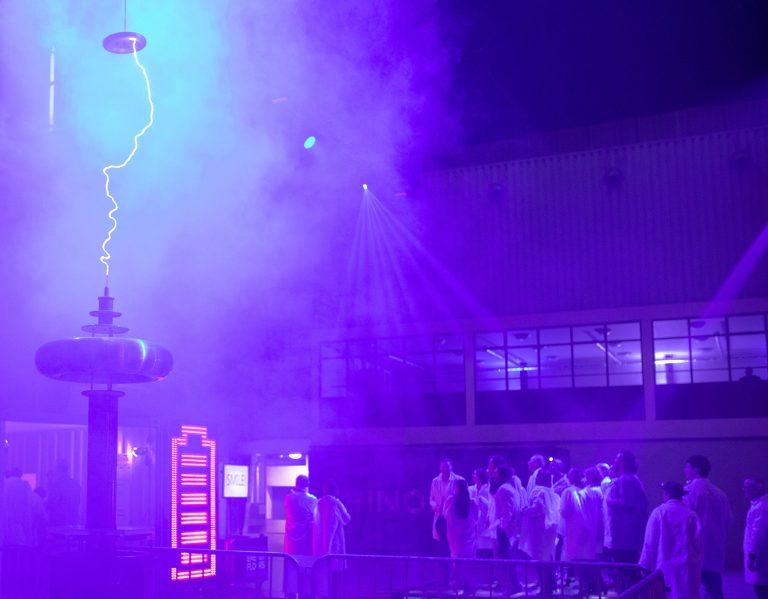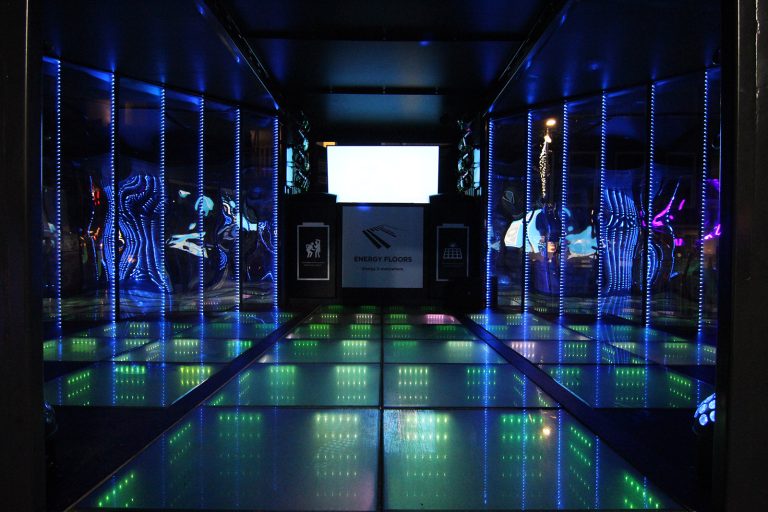Organizing events of any kind can be a daunting task with many factors to consider. But planning an event that is both cost-effective and sustainable doesn’t have to be complicated. With the right approach, it’s possible to create a successful event that not only meets the needs of your audience but also leaves a positive environmental footprint. In this article, we’ll provide you with nine simple tips on how to plan a sustainable event.
1. Limit Printing & Paper Usage
Instead of giving out timetables to people individually, display them at chosen spots. Gather lanyards and name tags once the event is finished and reuse the paper and plastic. Send out circulars and programs to participants by email or request that they view them through a mobile application or website.
And last but not least: use E-invitations! Avoid mail, posters, and brochures. Thanks to social media tools, it’s easier than ever to keep your guests up to date.
2. Eliminate Single use Items & Choose Compostable Disposables
Clearly communicate that your event is zero waste and provide examples of sustainable alternatives. For example, use reusable cups, instead of using single-use plastic cups, suggest a water bottle or thermos to your audience.
Get ready. No matter how many reminders you send, someone is doomed to forget to bring a reusable bottle or plate, so make sure you have extras on hand.
Organize your compost/recycling station. Make sure the various baskets or containers are clearly labeled. Consider contacting a local composter or recycling company to help with disposal. If not, make sure there are large, clearly marked signs so guests can dispose of items properly. please. Water is life! Make sure water stations are clearly labeled. Your guests need to know where to go when they are thirsty and refill their own thermos.
3. Plan Green Transport to Reduce Emissions
Research shows that transport contributes almost 90% of the CO2 emissions (on average) of an event. Event organizers worked with transportation consultants to develop greener solutions for event logistics and transportation. Transportation consultants are now implementing intelligent route planning to reduce travel times to and from events, significantly reducing carbon footprint.
A fully planned route also minimizes the number of pick-up points and allows them to be condensed into a few strategically placed locations, contributing to faster travel times. Digitization also helps transportation managers communicate efficiently and minimize paper consumption as everything is electronic. In the future, there is a demand for more sustainable and environmentally friendly events. There are countless things an event manager can do to protect the environment. Partnering with the right event transport consultant is a smart decision and a first step towards a sustainable event.

Kinetic Energy Floors have become a popular option for any event looking to create an immersive atmosphere. These interactive floors are designed to capture and reflect the energy of your guests, creating a unique atmosphere.
They use the latest in motion technology to turn the floor into an interactive experience that brings life to any occasion. Kinetic energy floors give eventgoers the opportunity to be part of a larger experience, with everyone able to participate and interact together.
Not only do kinetic energy floors create an engaging environment, but they also help enhance the overall ambiance by providing event planners with endless customizations and options. With customizable colors, patterns, effects, and audio responses available, kinetic energy floors can be tailored to fit any theme or vibe desired. On top of this, they can be easily installed in just about any space – from large stages at festivals to smaller spaces such as corporate lobbies – making them extremely versatile for almost all types of events.
A recent example is the city’s annual Long Autumn Shopping Night in Stuttgart . In the past, the city has entertained crowds with fireworks. However, there are widespread environmental impacts, namely the release of greenhouse gases into the atmosphere and the potential pollution of local rivers – the city has recently opted for a greener approach and contacted Energy Floors to install a kinetic interactive dancefloor. The project was a complete success for the client, achieving the overall goal of promoting an environmentally conscious project.
5. Which Venue should you choose?
Organizing an environmentally friendly event is an important way to ensure that your gathering has a positive impact on the environment. This can involve selecting a venue that focuses on sustainability and minimizing waste. When considering a venue for an eco-friendly event, there are several key factors to keep in mind.
First and foremost, it’s important to choose a location based on how easy it is to reach without relying heavily on vehicle travel. Choose venues close enough that guests can easily walk or bike there, or alternatively find one with public transportation nearby. Additionally, look for venues equipped with green energy like solar panels or wind turbines as well as water-saving fixtures such as low-flow toilets and showerheads. Furthermore, search for facilities that promote recycling practices and composting options for organic waste.
6. Choose Sustainable food & local Suppliers
As the eco-tourism sector expands, so will the necessity for hotels that are ecologically aware. Make an impression on your attendees by selecting a hotel that applies sustainable approaches to lessen its environmental footprint.
Catering is a major contributor to pollution in the events industry. Taking a greener approach to your event’s food and beverage plan can make a notable difference in getting rid of unneeded waste. When scouting out a caterer or when constructing a menu, take into account the following points:
- Does the menu include seasonal food items?
- Does the menu include locally grown or produced items?
- Can meat items be sourced from a local farm?
- Does my caterer have a waste reduction plan?
- Can any items (like tea or coffee) come from a sustainable source?
- Can leftover food be donated?

7. Solar Powered Lighting for events
Solar-powered lighting has become increasingly popular as an alternative to traditional electricity sources for events. This type of lighting is becoming more and more cost-effective, with many solar lighting solutions available at low costs. Solar-powered lights can be used to decorate any outdoor venue and provide a safe, energy-efficient way to light the area without relying on the grid.
The advantages of using solar-powered lighting are plentiful. By harnessing the power of the sun, event planners can save money on electricity bills while reducing their carbon footprint. Additionally, solar lights are cheaper than their traditional counterparts and relatively easy to install since no electrical wiring is required. There’s no need for bulky extension cords either; all you need are some panels that absorb sunlight during the day and store it in rechargeable batteries which then power your lights at nightfall.
8. Sustainable Decoration
No matter the size of your party or event, follow these tips on eco-friendly party decorations.
- Reuse. Buy or create reusable alternatives to disposable decorations.
- DIY. If you have time, try decorating it. We offer the following DIY options:
- Minimize waste by reusing decorations, making your own, or buying products with minimal packaging.
- Go nature and use organic and natural elements such as pine cones, pebbles, seashells…and potted plants and flowers.
- Shop locally to reduce the carbon footprint of your purchases and buy from eco-friendly sources. rent. Instead of buying new linens and decorations, consider renting from Party Rentals. For large events, it can be cheaper than buying everything new.
- Avoid using balloons that pose a serious threat to the environment and wildlife.
- Avoid using non-biodegradable materials such as plastic or glitter
- Minimize waste by reusing decorations, making your own, or buying products with minimal packaging.
This is a revolutionary thermal heating and cooling system that harnesses body heat from visitors and stores it in 200-meter-deep boreholes to heat or cool the venue. It is activated for the first time at a special launch event and is active across three separate spaces – a 1250-person capacity event space, a 1000-person event space and the main foyer entrance. Heat is transported using a carefully selected carrier fluid through a closed network of pipes to heat pumps in the plant room, before going 200m underground to the 12 U-shaped boreholes for storage. When the energy is ready to be used, it travels back to the heat pumps where it is upgraded to a suitable temperature and emitted back into SWG3’s event spaces. The system can even provide simultaneous heating AND cooling, meaning body heat can be captured live during an event and instantly be delivered to the foyer.
In conclusion,planning a sustainable event is easier than it may seem. It’s all about making small changes that have a big impact. By utilizing the nine simple tips outlined in this article, you can plan an event that not only saves money but also reduces its environmental footprint. From setting up a composting station to hiring renewable energy companies, there are many ways to make your event more eco-friendly. Take action today and start planning a sustainable event that leaves a lasting impression on your guests!
